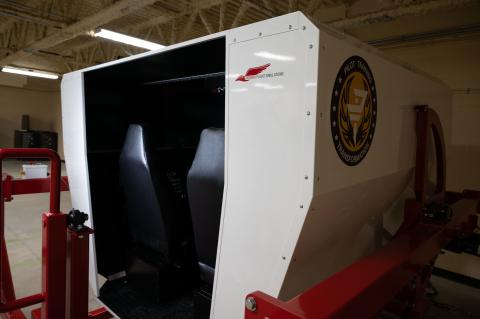Mission Need
The Air Force Agency for Modeling and Simulation (AFAMS) must prepare airmen for battle, and modeling and simulation plays an enormous role in effective and efficient instruction. Working with SAIC, the 19th Air Force developed the AMF-S course under the AFMS3 contract (currently led by AFAMS) fielding 25 Mid Tier Training Devices (MTDs) at Vance, Laughlin, and Columbus Air Force Bases - each connected through the Air Force’s "Awaken" Network. Having successfully achieved Proof of Concept, the simulators needed permanent homes.
Solution

Rather than explore warehousing options, the 19th Air Force and AFAMS leaders saw an opportunity to better prepare ROTC Airmen across the country by working with universities and industry partner SAIC to host highly innovative and effective simulators on campuses. The first units to find new homes have now landed at Tuskegee University and the University of Central Florida.
The full-motion, three-axis T-1A cockpit is not simply delivered in a crate. AFAMS Commander Col “ABC” Graham has ensured that they are installed and maintained with the assistance of SAIC, which also integrates the components and develops the simulator’s software. Per an AFAMS LinkedIn post, “the high-fidelity, lower-cost, tech-enabled instruction simulator will be open to academia and industry to demonstrate capabilities and conduct research projects and collaborative development. The AMF-S program is designed to bridge the gap between traditional and future Air Force pilot training using advanced multi-crew aircraft - without compromising their capability and allowing them more time training in a cockpit.”
Mission Outcome
The simulator is never grounded for bad weather or maintenance, which means more time in the cockpit. Young pilots learn in a fully immersive environment. They see their own hands while wearing the mixed-reality headset, and they manipulate physical controls, creating valuable muscle memory. The end result is better prepared pilots who are not constrained in their learning by factors like fuel, weather or repairs.
Learn more about how SAIC supports pilot training and simulation, synthetic training solutions, and digital engineering for defense missions.
